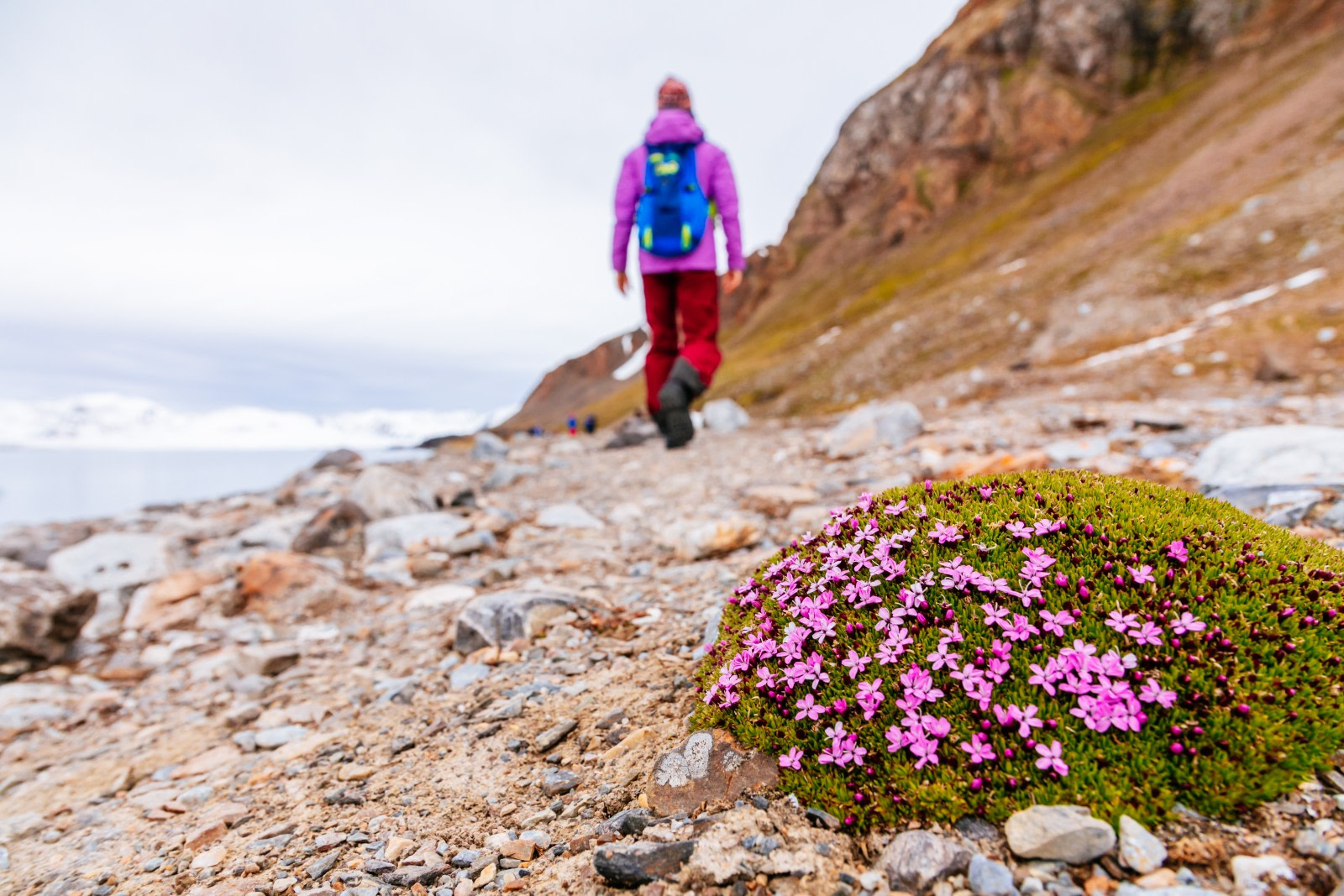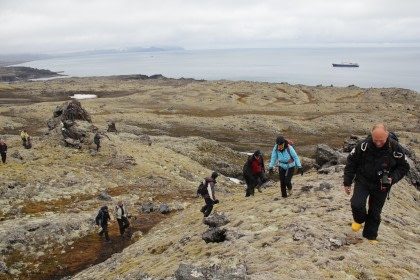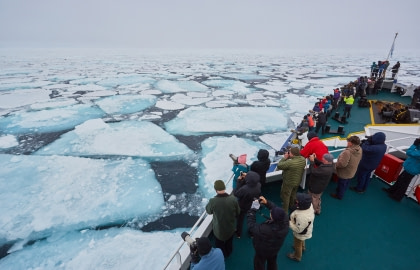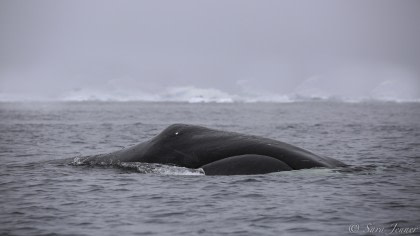The early weeks of the Spitsbergen high season
Most Arctic expedition cruises fall into two camps: those that sail during the autumn and winter and focus primarily on the northern lights, and those that sail during the high season (middle to late summer) and focus on everything else.

But if you’re not afraid of a slight temperature drop, there is a third option.

By which we mean cruises that visit Spitsbergen from late spring through early summer, perhaps the most overlooked and underrated period in the Arctic travel calendar.
In terms of weather, activities, and animals, here’s why this is such a dynamite date range.
Weather: You can soak up the last of winter while enjoying the first of summer
It’s probably safe to assume that as a polar enthusiast you’re less enamored of balmy beaches and sweating daiquiris than glittering icebergs and sprawling glaciers.
If so, the early Spitsbergen season gives you these wintry elements in spades.

Snow still clings to the mountains and patches of tundra, and pack ice lingers along many of the coastlines. Though the weather is warmer than the March and April low points of –10° C (14°F), you’ll still feel that you are very much in the Arctic.
But that’s at least partly why you came, right?
Activities: The core Spitsbergen excursions are well underway
Zodiac cruising and landings, shoreline and inland walks, and all other non-supplementary expedition activities are available during Spitsbergen’s late spring, early summer.

And because winter has almost entirely given way to summer, as mentioned, you’ll be able to enjoy these activities in relatively fair Arctic temperatures. You’re also less likely to be blocked from entering any of the fjords, bays, or waterways of Spitsbergen.

When you add this to the fact that Svalbard’s wildlife is now ready to see and be seen, this makes late spring through early summer an ideal time to visit.
Animals: You can see the full cast of Spitsbergen wildlife
Polar bears hunt the pack ice,

walruses doze on the shores,

cliff-nesting birds tuck into breeding perches below peaks still gripped in winter ice.

In terms of wildlife, the early weeks of Spitsbergen’s high season offer some of the best opportunities in the Arctic. Merely in terms of seabirds, you can see all the area’s marquee species: kittiwakes, little auks, Brünnich’s guillemots, black guillemots, and more.

Arctic foxes are also combing the cliff bases for fallen chicks and eggs, reindeer are roaming and munching the tundra,

and multiple species of seal (bearded, ringed, etc.) may be seen, depending on where you sail.

In other words, bring a camera and a lot of film (i.e., memory cards) when you visit Spitsbergen in the early season.
Summary of Spitsbergen’s stunning late spring, early summer
What New York is in the autumn, Spitsbergen is in the late spring and early summer.

At this wondrous time of year, you can sail yawning fjords and ice-scattered bays, walk rugged beaches and vast flowering inlands, view colossal glaciers and towering mountains and exotic polar species to be found nowhere else.

But don’t worry if you’re not able to make an Arctic cruise precisely in that date range, because the best time to take a Spitsbergen trip is always as soon as possible.






